Recent Articles
Popular Makes
Body Types
10 Cars with Forward Collision Warning and Affordable Pricing
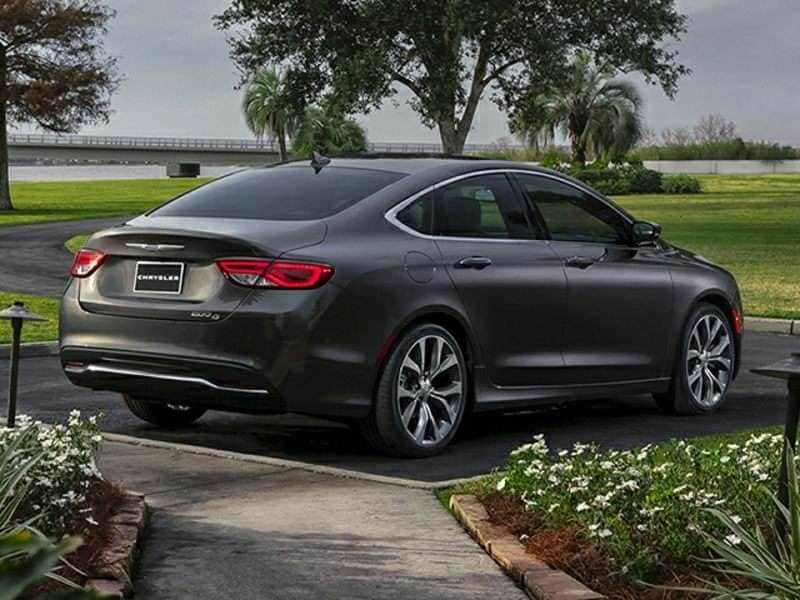
2016 Chrysler 200
As the technology continues to migrate throughout the industry, automakers are offering more and more mainstream cars with forward collision warning systems (FCW). The technology comes in a variety of different flavors, but the key is that the systems can tell if your car is coming up on another vehicle too quickly, after which they can alert you to take corrective action of some sort. In the more advanced setups, this functionality also can detect pedestrians and/or automatically engage the vehicle’s brakes for you. In fact, there are so many entries with automatic emergency braking that we’ve given them a separate list that readers should watch for in the near future.
2016 Chevrolet Spark
The Bowtie brand’s decision to sell a city-sized car in this country, complete with many of Chevy’s favorite technologies, makes the 2016 Chevrolet Spark a go-to choice for inexpensive cars with forward collision warning. Now, it’s true that that feature is available solely on the range-topping Spark—and only with the available CVT and the $195 Driver Confidence Package—but that still keeps the car’s MSRP at a mere $18,355. It also pairs forward collision warning with lane-departure warning, side blind-zone alert, rear park assistance and a rearview camera, to serve up a surprisingly robust variety of driver assistance measures despite its nimble proportions. Of course, high levels of technology have become a hallmark of Chevrolet’s recent vehicles, and the Spark also shows that with its infotainment systems. OnStar’s mobile WiFi and 4G LTE service remain the headlining attractions; however, the 2016 model year additionally brings the benefit of Android Auto/Apple CarPlay smartphone integration.
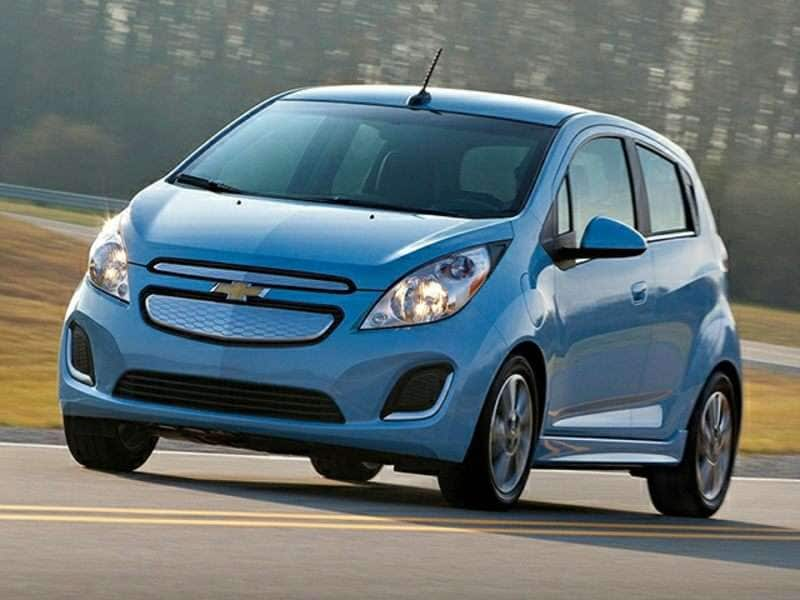
Photo by Chevrolet Media
2016 Chrysler 200
Like a number of mid-size sedans with forward collision warning, the 2016 Chrysler 200 bundles that technology with automatic emergency braking and a whole lot more. Indeed, the 200’s available SafetyTec group builds on those driver-assistance measures with adaptive cruise control (with stop-and-go capability for traffic jams), rain-sensitive windshield wipers, automatic high beams, perpendicular- and parallel-parking assistance, and lane-departure warning and lane-keeping assistance. If that sounds like a fairly premium setup, well, you’re right, and Chrysler does reserve that package for the up-level 200C model as a $1,295 option. The thing is, because the SafetyTec package must be paired with two more option groups, the bottom-line increase is $2,985 and an MSRP north of $31,500. On the other hand, the 200C brings along plenty of other lux cues with all that, from Nappa leather seating with a heated front row to a heated and leather-wrapped multi-function steering wheel.
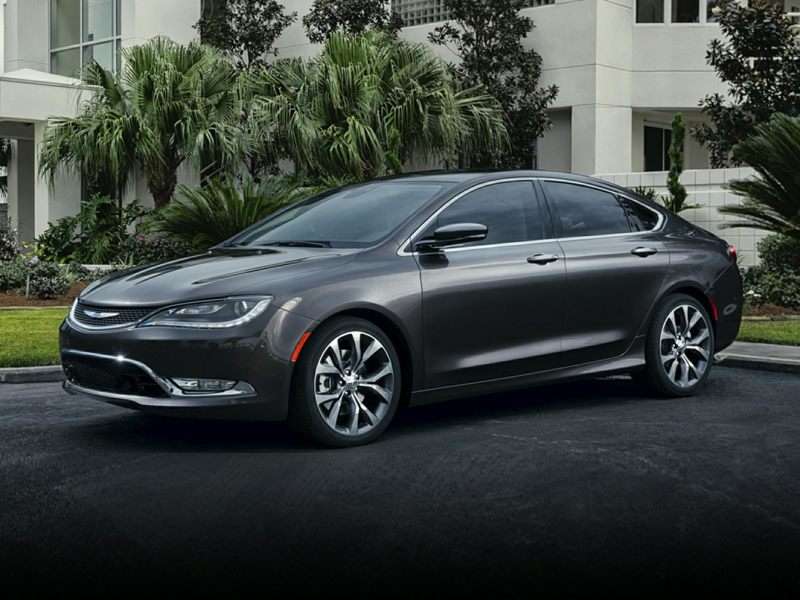
2016 Dodge Challenger
The 2016 Dodge Challenger represents the middle ground for modern day muscle cars with forward collision warning. While its Ford rival matches FCW with automatic emergency braking, and the Bowtie entry is entirely bereft of the technology, the Challenger carries a basic setup that can provide visual and audible alerts if it detects the car closing too rapidly on a vehicle ahead. For the Challenger, FCW is part of the available Technology group, with rain-sensitive wipers, automatic high beams, adaptive cruise control and an MSRP of $1,195 Moreover, it’s offered for most Challenger models, along with a blind spot monitor and rear cross-path detection. The exceptions are the entry-level SXT and the fire-breathing Hellcat edition, but with that fast and furious feline, engineers probably thought that FCW would be redundant. After all, backed by 707 supercharged horsepower and 650 lb.-ft. of torque, the Hellcat can close too rapidly on almost anything.

Photo by Dodge
2016 Mazda Mazda3
More and more compact cars with forward collision warning are being introduced by today’s automakers, with the zoom-zoom brand helping to set the pace. The 2016 Mazda Mazda3, for example, has an available Forward Obstruction Warning. When the car’s radar-enabled sensors detect a potential front-collision scenario, the Mazda3 relies on both blinking lights and a constant beeping to get the driver’s attention. It’s also worth noting that Mazda’s compact hatch and sedan also can be configured with Smart City Brake Support for low-speed travel. That latter technology actually won’t warn the driver, but it will prepare the brakes for immediate action and, in some cases, apply automatic stopping power. Both are in the mix with Mazda’s i-ACTIVSENSE occupant-protection package, and so are features such as Mazda Radar Cruise Control, automatic high-beam control and lane-departure warning.
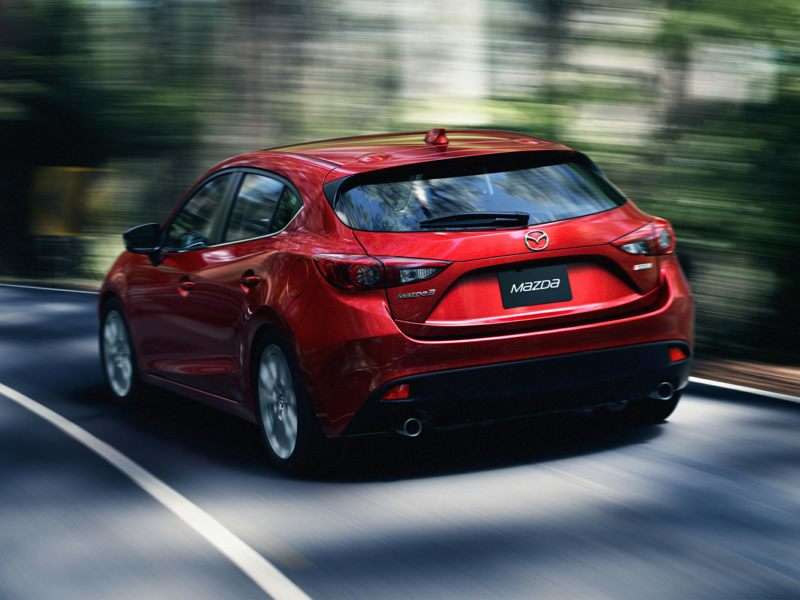
Photo by Mazda USA
2016 Ford Taurus
The Blue Oval tends to be bullish about safety, so it makes sense that the 2016 Ford Taurus is on our list of cars with forward collision warning. And logically enough, the full-size sedan integrates that FCW technology with its adaptive cruise control and automatic braking systems, offering all that functionality for the luxurious Taurus Limited and the high-performance Taurus SHO. In both models, the system can detect a slowed or stopped vehicle ahead of the Taurus, project a visual “head-up” alert on the inside of the windshield and pre-charge the brakes for immediate and improved stopping—although, to be clear, without fully automatic braking. Pricing here is set at $1,995, which also includes active park assistance and lane-keeping technology. Naturally, the Taurus also has the industry’s top trio of driver-assistance measures on tap—i.e., a blind spot monitor, rear cross-traffic alert and rearview camera.
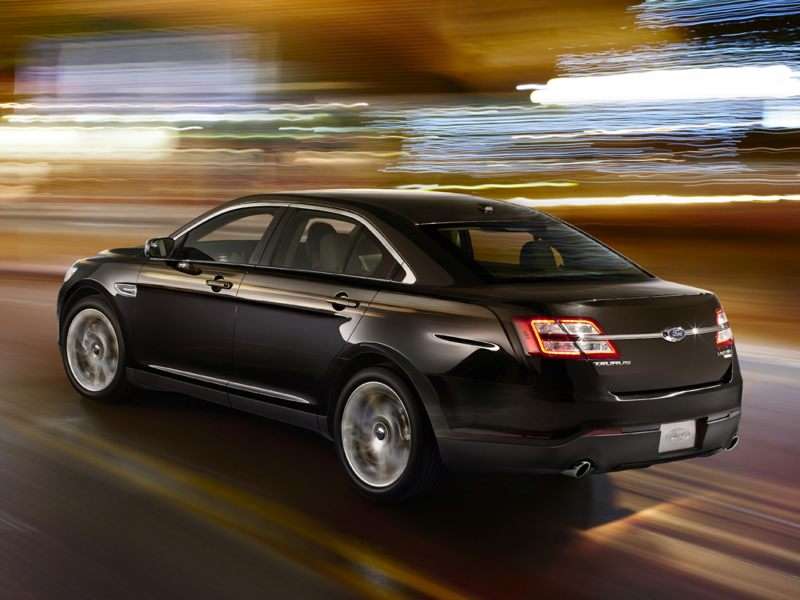
Photo by Ford
2016 Volkswagen Golf SportWagen
Don’t worry about VW’s recent diesel debacle. The 2016 Volkswagen Golf SportWagen does just fine with its standard four-cylinder TSI engine, which leverages turbocharging and direct injection to force 170 horsepower and 199 lb.-ft. of torque from its 1.8 liters of displacement. That unit ensures a fair amount of “sport” in the SportWagen, while its rear cargo area delivers a very wagon-esque 66.5 cubic feet of total storage space. The automaker also has a new value proposition for the SportWagen that’s relevant here: a Golf SportWagen Limited Edition that’s one of the most versatile and practically priced cars with forward-collision warning. Stickered from $24,995, the Limited Edition is on its way to dealerships with VW’s FCW/AEB technology, a panoramic sunroof, 17-inch alloy wheels, leatherette seating with a heated front row, Android Auto/Apple CarPlay smartphone integration and the ol’ much, much more.
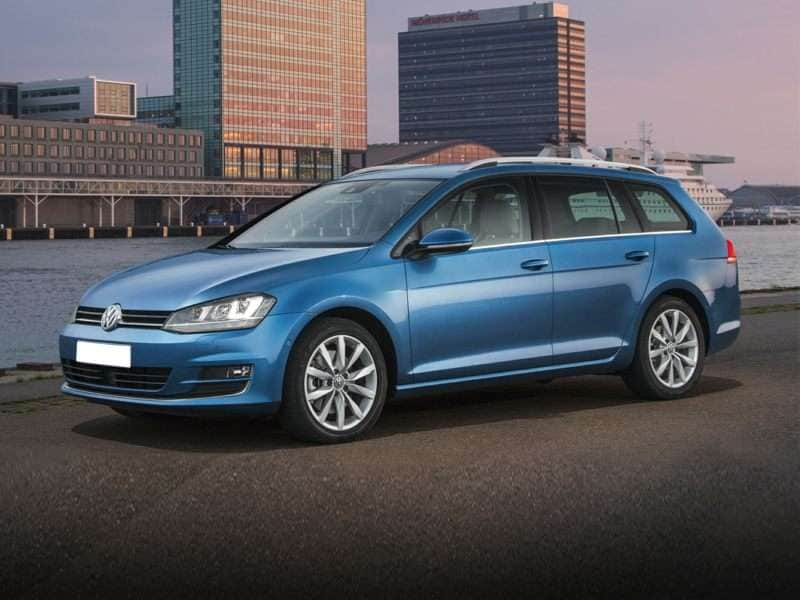
2016 Nissan Altima
The 2016 Nissan Altima extends the reach of typical cars with forward collision warning by debuting “predictive” technology. With this innovation, front-facing sensors not only can monitor the speed and distance of the vehicle right ahead of the Altima, but also the vehicle directly ahead of that one as well. Then, if either of those vehicles begins to slow or stop, the system can deploy warnings and automatic braking to help avoid an impact. No other vehicle in the Altima’s class has this kind of system, according to Nissan, and it can be combined with blind spot warning, adaptive cruise control, rear cross-traffic alert and a rearview camera. The 2016 Altima also has been refreshed appearance-wise, welcoming the dramatic “Energetic Flow” design language that details the brand’s four-door sports car, the Nissan Maxima. Meanwhile, the new-for-2016 Altima SR borrows even more of the Maxima’s bravado with an athletically oriented upgrade of its own.
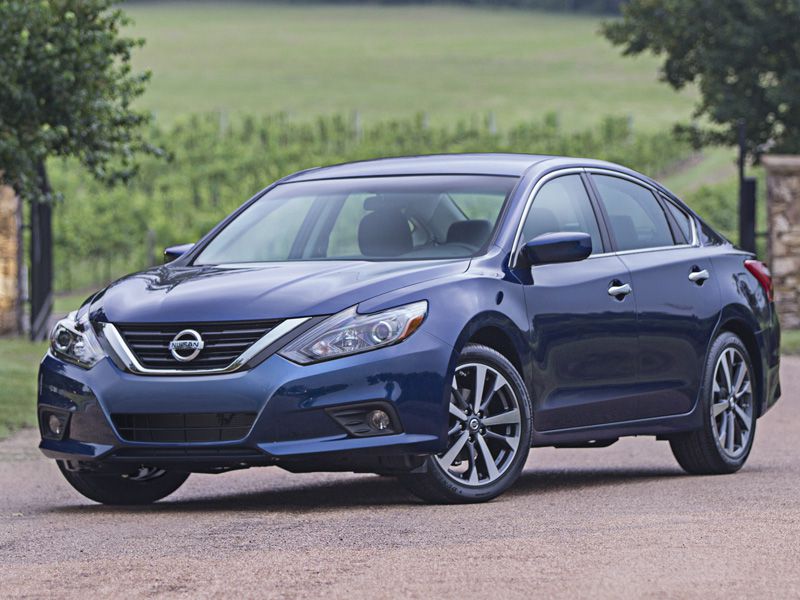
2016 Toyota Prius
For customers who want particularly strong fuel economy and safety ratings, there are hybrid cars with forward collision warning like the 2016 Toyota Prius. This year’s edition is all-new, too, and its many updates include FCW as part of Toyota’s available “Safety Sense P” package. More specifically, FCW is integrated within a pre-collision system that also has a dedicated pedestrian-detection function; that, in turn, is complemented by additional Safety Sense systems like lane-departure alert with steering assistance, full-speed-range adaptive cruise control, and automatic high beams. A rear-vision camera is standard on all Prius models. Yet even as engineers added a significant influx of safety gear to the vehicle, they also tuned up the car’s hybrid propulsion system to do even better at what it does best. As a result, EPA ratings for the Prius have climbed to a standard 54 mpg city/50 mpg highway/52 mpg combined, with the first Prius Eco edition capable of an eye-popping EPA line of 58/53/56.
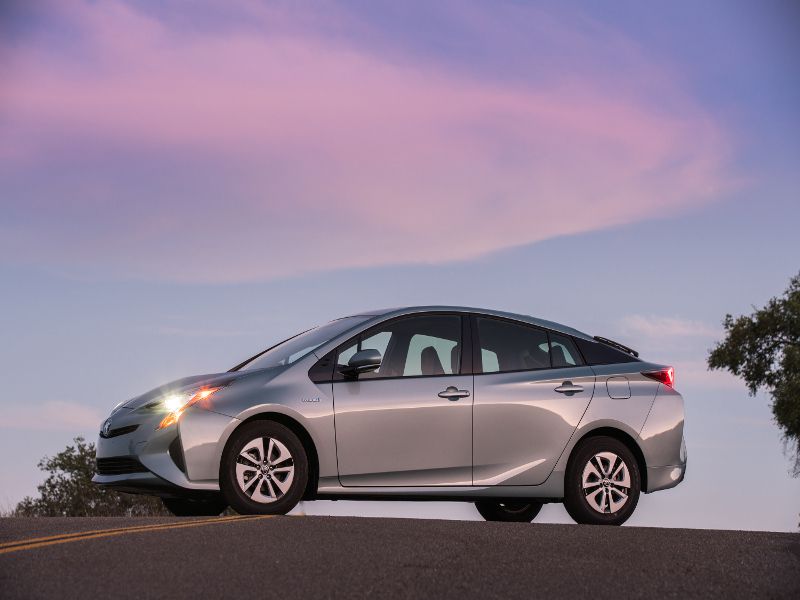
2016 Kia Soul
You don’t hear much about the hamsters these days, but the 2016 Kia Soul continues to be a popular pick for human customers. The nameplate has grown sales every year since the first-gen model made its premiere in 2009. For 2016, the Soul also grows its menu of style and technology features, starting with both a two-tone Designer Collection special edition and an upscale Umber Color Package that’s a separate enhancement for the Soul’s cabin. The former dresses the Soul in either a white body/red roof combination or a red body with a black roof; the latter is highlighted by an eponymous shade of Nappa leather for the car’s seat trim. Both are nice, but to qualify among cars with forward collision warning, the Soul also has to be ordered with a premium package, since that supplies FCW, lane-departure warning, Infinity audio with speaker lights, and an 8-inch infotainment interface with navigation.
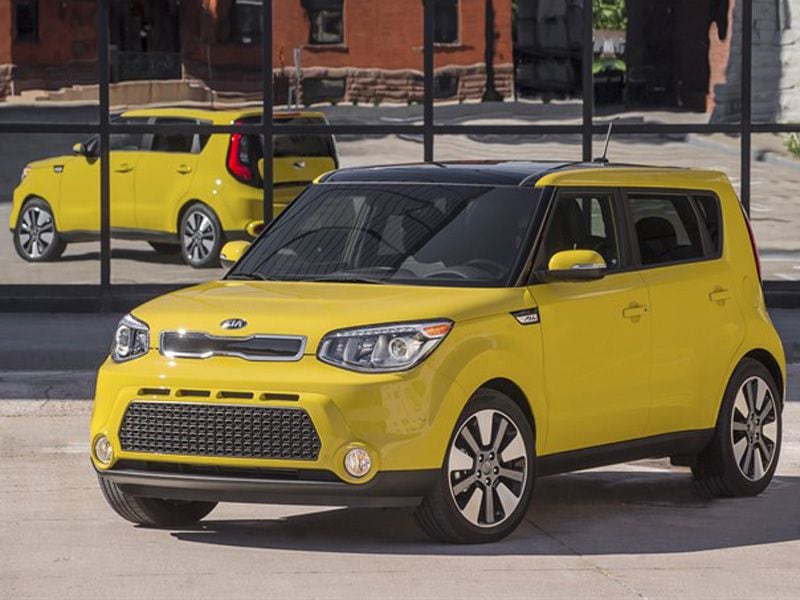
Photo by Kia
2017 Hyundai Elantra
Already on sale, the 2017 Hyundai Elantra stands out as an all-new model that, even with its next-gen updates, manages to be priced $100 less than the 2016 edition. But beyond its high-value positioning, the Elantra also surprises with new high-tech occupant-protection systems that wouldn’t be out of place on much more expensive cars. Thus, as you’ll find on premium cars with forward collision warning, the Elantra further furnishes pedestrian-detection technology, and it’s the only car in its class to do so. Lane-departure warning, lane-keeping assistance, rear cross-traffic alert, smart cruise control and a rearview camera with guidelines all make their appearances, as well. Finally, customers also will find there’s a relatively wide range of infotainment tech offered by the Elantra, allowing them to enjoy an 8-inch touchscreen, navigation, smartphone integration with Apple CarPlay/Android Auto, and an audiophile-style sound system with Harman’s “Clari-Fi” music-restoration technology.
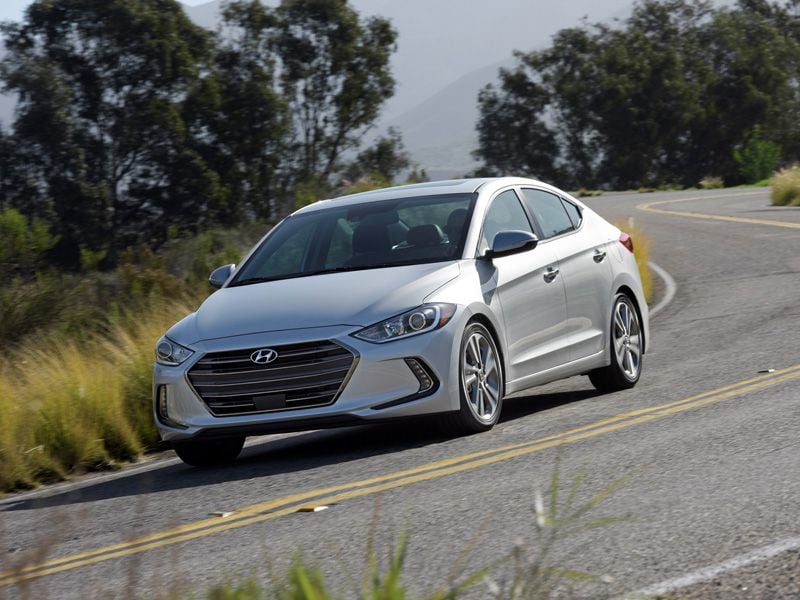
Photo by Hyundai